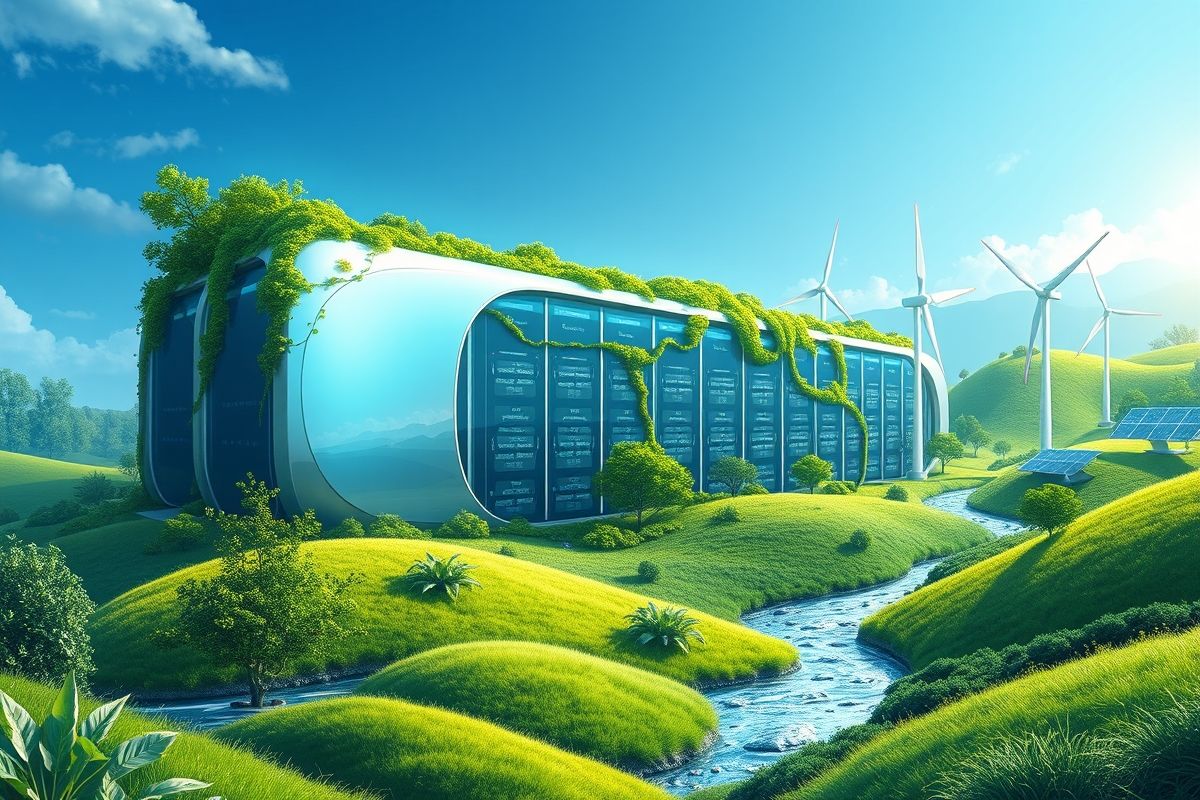Sustainable Computing: Building Green Data Centers for the Future
The digital revolution is powering progress, but its energy demands are raising serious environmental concerns. The global data center industry consumes a significant portion of the world's electricity, contributing substantially to greenhouse gas emissions. However, the path towards sustainable computing is not just an environmental imperative; it's also a strategic advantage, offering cost savings and enhanced brand reputation. This article explores practical steps organizations can take to build and operate greener data centers.
1. Efficient Cooling Strategies: Beyond Traditional HVAC
Traditional air-cooling systems in data centers are energy-intensive. More sustainable alternatives are gaining traction:
- Liquid Cooling: Direct-to-chip liquid cooling offers significantly higher cooling efficiency compared to air cooling. This involves circulating a coolant directly to the server components, removing heat more effectively.
- Free Air Cooling: Leveraging natural airflow in regions with suitable climates can dramatically reduce reliance on mechanical cooling systems. This requires careful design and location selection.
- Adiabatic Cooling: This method uses water evaporation to cool the air, reducing the energy needed for mechanical refrigeration. It's particularly effective in dry climates.
Example: Google's data centers utilize a combination of free air cooling and optimized airflow management to minimize energy consumption.
2. Renewable Energy Integration: Powering Data Centers with Clean Sources
Shifting away from fossil fuel-based electricity is crucial. Data centers can significantly reduce their carbon footprint by integrating renewable energy sources:
- Solar Power: On-site solar panels can provide a substantial portion of a data center's energy needs, especially in sunny locations.
- Wind Power: In areas with consistent wind, wind turbines can be a viable renewable energy source.
- Hydropower: Where geographically feasible, hydropower can provide a reliable and clean energy supply.
- Power Purchase Agreements (PPAs): Organizations can purchase renewable energy credits from renewable energy providers, effectively offsetting their carbon footprint.
Example: Microsoft's commitment to 100% renewable energy for its data centers demonstrates a leading approach in the industry.
3. Optimized Hardware and Software: Reducing Energy Consumption at the Source
Efficient hardware and software play a critical role in minimizing energy consumption:
- Energy-Efficient Servers: Choosing servers with high performance-per-watt ratios is paramount. Look for certifications like ENERGY STAR.
- Virtualization and Consolidation: Virtualization reduces the number of physical servers needed, leading to lower energy consumption and improved resource utilization.
- Software Optimization: Efficient coding practices and optimized algorithms reduce processing time and energy usage.
- Server Density Optimization: Careful planning of server placement and airflow can improve cooling efficiency and reduce energy waste.
Code Example (Python - Illustrative): While full code optimization is beyond the scope, a simple example highlights the principle of efficient algorithms:
# Inefficient approach
for i in range(n):
for j in range(n):
# ... some operation ...
# More efficient approach (if possible)
# ... optimized algorithm ...4. AI-Driven Optimization: Intelligent Energy Management
Artificial intelligence is revolutionizing energy management in data centers. AI algorithms can:
- Predict energy demand: AI models can accurately forecast energy consumption, enabling proactive adjustments to cooling and power systems.
- Optimize cooling strategies: AI can dynamically adjust cooling systems based on real-time temperature and workload data, minimizing energy waste.
- Detect and prevent equipment failures: Predictive maintenance powered by AI can reduce downtime and prevent energy loss due to equipment malfunctions.
5. Data Center Location and Design: Environmental Considerations
The location and design of a data center significantly impact its environmental impact. Factors to consider include:
- Climate: Locations with cooler climates require less energy for cooling.
- Access to renewable energy: Proximity to renewable energy sources reduces reliance on fossil fuels.
- Water availability: Water-cooled systems require access to ample water resources.
- Sustainable building materials: Using environmentally friendly materials reduces the overall carbon footprint of the data center.
Future Trends and Implications
The future of sustainable computing involves further advancements in technologies like liquid cooling, AI-driven optimization, and the widespread adoption of renewable energy sources. We can expect to see increased focus on circular economy principles, with data center components being designed for reuse and recycling.
Actionable Takeaways
- Assess your current data center's energy consumption and identify areas for improvement.
- Explore the feasibility of integrating renewable energy sources into your operations.
- Invest in energy-efficient hardware and software.
- Consider implementing AI-driven energy management solutions.
- Develop a comprehensive sustainability strategy for your data center operations.
Resource Recommendations
- The Green Grid
- Uptime Institute
- US EPA's Energy Star Program
